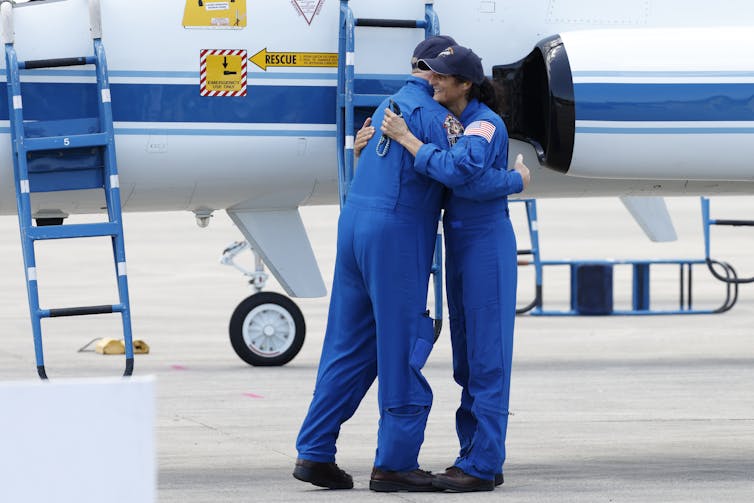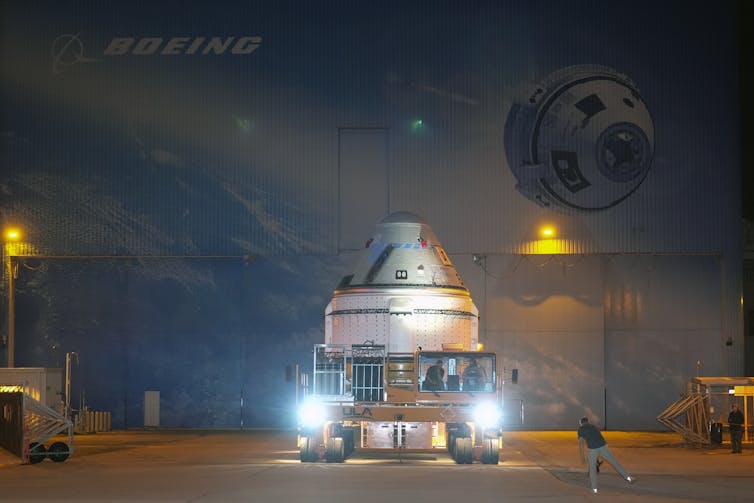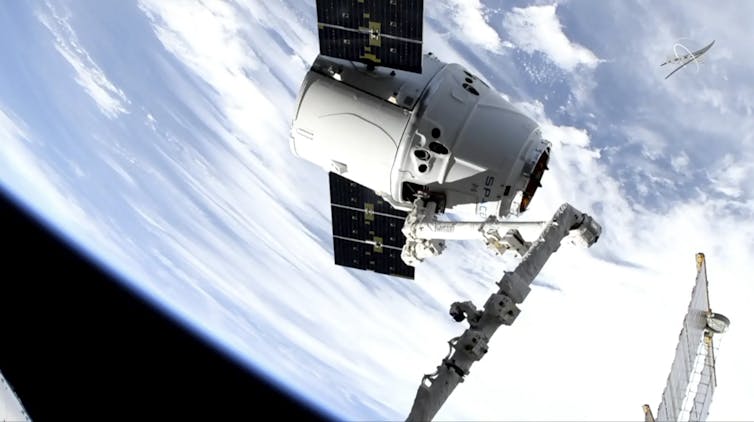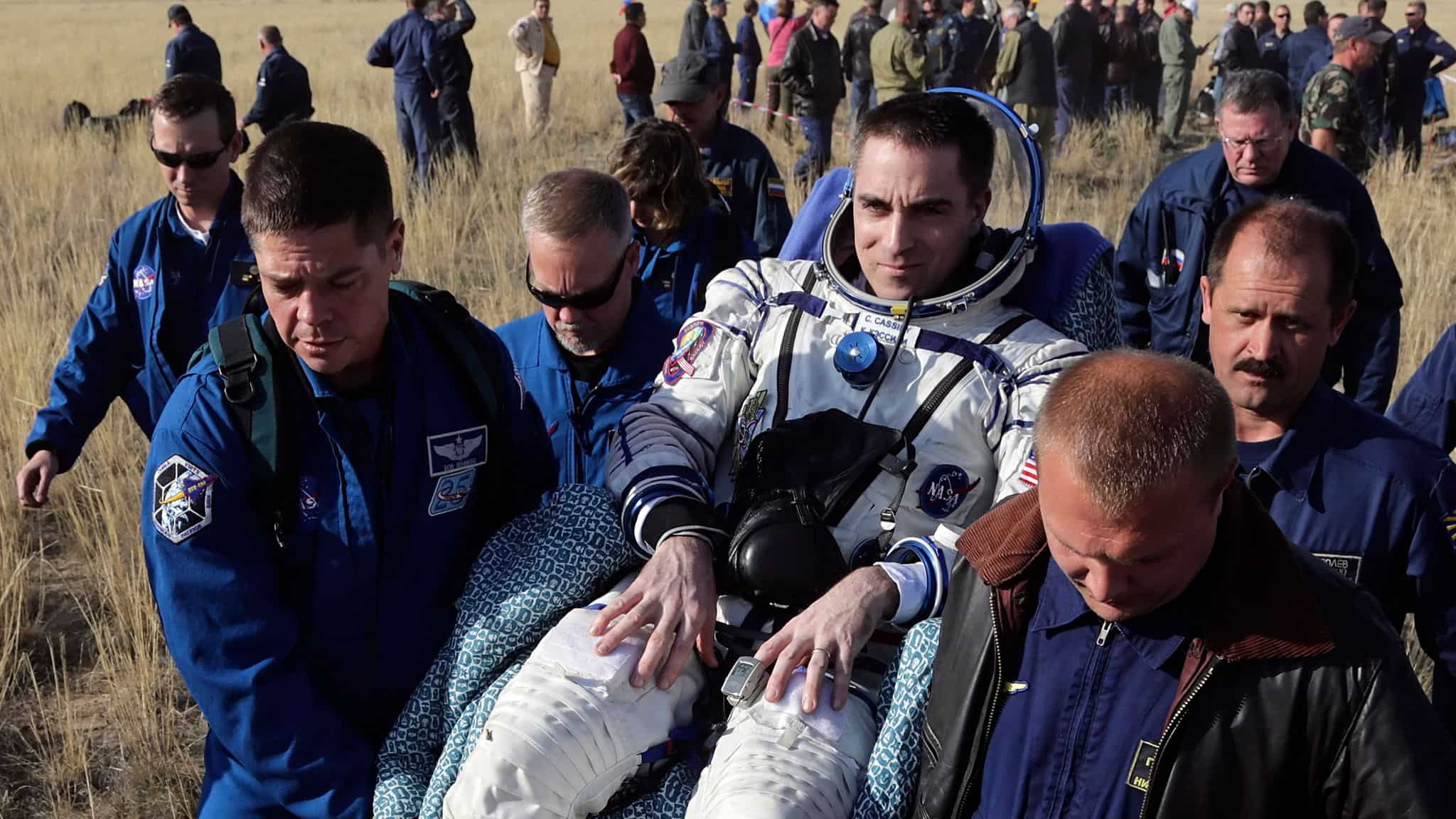Science
Quest for meteorites found in Canada hits legal snag

|
|
Catch a falling star if you can, and by all means put it in your pocket, but don’t try to cross international borders with it lest you run afoul of a little-known Canadian law.
An American museum will have to navigate that law’s intricacies should it try to buy portions of a meteorite believed to have landed in New Brunswick last month.
A fireball ripped through the Earth’s atmosphere on April 8 and landed somewhere in the province, prompting the Maine Mineral and Gem Museum to offer a US$25,000 reward for the first one kilogram meteorite recovered.
But Chris Herd, a professor at the University of Alberta and curator of its meteorite collection, said obtaining the asteroid fragments won’t be as simple as making an offer.
“In Canada, all meteorites are considered Canadian cultural property automatically through the Cultural Property Export and Import Act,” he said in an interview. “… “If it’s public property, say an American comes in and finds (the meteorite,) they have to apply to export it from Canada. They may not actually take it out of Canada unless they have an approved export permit.”
The museum in Bethel, Maine, has openly expressed interest in obtaining some of the space debris if and when it’s found.
Darryl Pitt, head of the museum’s meteorite division, said doppler radar readings suggest the meteorite — which most likely originated from the asteroid belt between Mars and Jupiter — was likely scattered over the part of New Brunswick straddling Maine.
The museum’s interest also extends beyond just the first 1-kg meteorite; a news release said it will buy any additional specimens found.
“Depending on the type of meteorite this is, specimens could easily be worth their weight in gold,” Pitt said.
Herd said meteorites can be identified by a dark brown or black outer glassy crust that resembles an eggshell, he said.
“That’s a telltale sign that it’s come through the Earth’s atmosphere from space,” he said, noting they’re usually dense and surprisingly heavy.
The person who finds a whole or partial meteorite on public property must complete an export application that’s reviewed by an expert examiner, said Herd, who is one of several in Canada.
“The expert examiner then might say, ‘well, this is of potential outstanding significance and national importance,”‘ he said.
“If the expert examiner says, ‘Oh, I think this is significant, and important,’ then (the Canadian Border Services) will recommend refusal of the export permit.”
The file then goes to a cultural property export review board, which can disagree with the expert examiner and let the meteorite be exported. Alternatively, it can impose a six-month embargo period during which Canadian institutions can offer to buy the meteorite for a fair market price, he said.
Anyone taking a meteorite out of Canada without the requisite permit can face fines of up to $25,000, as much as five years in prison or both.
Despite its open interest in purchasing the meteorite, Pitt said the Mineral and Gem Museum is well aware of the regulations it must follow to obtain any fragments that surface.
“The museum should always do due diligence … as to whether the meteorite was obtained legally before they actually acquire it,” Herd said.
“If it comes from outside of the U.S., as would be the case in this scenario, then they would need to do their due diligence and make sure that the person exported it legally from Canada.”
Pitt said the responsibility of obtaining an export permit lies with whoever finds a meteor. For its part, he said the museum would “immediately get in touch” with Herd to help broker a deal.
“If Canada wants it, it’s Canadian,” he said. “I hope that we could arrive at an agreement with our Canadian friends so that a sample of it could come to the Maine Mineral and Gem Museum.”
Herd said he made a deal with an American dealer for a piece of the Grimsby meteorite that fell in southern Ontario’s Niagara region in 2009.
“They realized they weren’t going to be able to get it exported because it was a unique fall,” he said.
Since Canada is a vast country, Herd said thousands of meteorites may have fallen in remote places.
“I don’t think we would actually know how many of them are anywhere in Canada. But they are part of Canada’s natural history. The law is there for a reason.”
This report by The Canadian Press was first published May 21, 2023.





Science
Boeing's Starliner is about to launch − if successful, the test represents an important milestone for commercial spaceflight – The Conversation


If all goes well late on May 6, 2024, NASA astronauts Butch Wilmore and Suni Williams will blast off into space on Boeing’s Starliner spacecraft. Launching from the Kennedy Space Center, this last crucial test for Starliner will test out the new spacecraft and take the pair to the International Space Station for about a week.
Part of NASA’s commercial crew program, this long-delayed mission will represent the vehicle’s first crewed launch. If successful, it will give NASA – and in the future, space tourists – more options for getting to low Earth orbit.
AP Photo/Terry Renna
From my perspective as a space policy expert, Starliner’s launch represents another significant milestone in the development of the commercial space industry. But the mission’s troubled history also shows just how difficult the path to space can be, even for an experienced company like Boeing.
Origins and development
Following the retirement of NASA’s space shuttle in 2011, NASA invited commercial space companies to help the agency transport cargo and crew to the International Space Station.
In 2014, NASA selected Boeing and SpaceX to build their respective crew vehicles: Starliner and Dragon.
Boeing’s vehicle, Starliner, was built to carry up to seven crew members to and from low Earth orbit. For NASA missions to the International Space Station, it will carry up to four at a time, and it’s designed to remain docked to the station for up to seven months. At 15 feet, the capsule where the crew will sit is slightly bigger than an Apollo command module or a SpaceX Dragon.
Boeing designed Starliner to be partially reusable to reduce the cost of getting to space. Though the Atlas V rocket it will take to space and the service module that supports the craft are both expendable, Starliner’s crew capsule can be reused up to 10 times, with a six-month turnaround. Boeing has built two flightworthy Starliners to date.

AP Photo/John Raoux
Starliner’s development has come with setbacks. Though Boeing received US$4.2 billion from NASA, compared with $2.6 billion for SpaceX, Boeing spent more than $1.5 billion extra in developing the spacecraft.
On Starliner’s first uncrewed test flight in 2019, a series of software and hardware failures prevented it from getting to its planned orbit as well as docking with the International Space Station. After testing out some of its systems, it landed successfully at White Sands Missile Range in New Mexico.
In 2022, after identifying and making more than 80 fixes, Starliner conducted a second uncrewed test flight. This time, the vehicle did successfully dock with the International Space Station and landed six days later in New Mexico.
Still, Boeing delayed the first crewed launch for Starliner from 2023 to 2024 because of additional problems. One involved Starliner’s parachutes, which help to slow the vehicle as it returns to Earth. Tests found that some links in those parachute lines were weaker than expected, which could have caused them to break. A second problem was the use of flammable tape that could pose a fire hazard.
A major question stemming from these delays concerns why Starliner has been so difficult to develop. For one, NASA officials admitted that it did not provide as much oversight for Starliner as it did for SpaceX’s Dragon because of the agency’s familiarity with Boeing.
And Boeing has experienced several problems recently, most visibly with the safety of its airplanes. Astronaut Butch Wilmore has denied that Starliner’s problems reflect these troubles.
But several of Boeing’s other space activities beyond Starliner have also experienced mechanical failures and budget pressure, including the Space Launch System. This system is planned to be the main rocket for NASA’s Artemis program, which plans to return humans to the Moon for the first time since the Apollo era.
Significance for NASA and commercial spaceflight
Given these difficulties, Starliner’s success will be important for Boeing’s future space efforts. Even if SpaceX’s Dragon can successfully transport NASA astronauts to the International Space Station, the agency needs a backup. And that’s where Starliner comes in.
Following the Challenger explosion in 1986 and the Columbia shuttle accident in 2003, NASA retired the space shuttle in 2011. The agency was left with few options to get astronauts to and from space. Having a second commercial crew vehicle provider means that NASA will not have to depend on one company or vehicle for space launches as it previously had to.
Perhaps more importantly, if Starliner is successful, it could compete with SpaceX. Though there’s no crushing demand for space tourism right now, and Boeing has no plans to market Starliner for tourism anytime soon, competition is important in any market to drive down costs and increase innovation.
More such competition is likely coming. Sierra Space’s Dream Chaser is planning to launch later this year to transport cargo for NASA to the International Space Station. A crewed version of the space plane is also being developed for the next round of NASA’s commercial crew program. Blue Origin is working with NASA in this latest round of commercial crew contracts and developing a lunar lander for the Artemis program.

NASA TV via AP
Though SpaceX has made commercial spaceflight look relatively easy, Boeing’s rocky experience with Starliner shows just how hard spaceflight continues to be, even for an experienced company.
Starliner is important not just for NASA and Boeing, but to demonstrate that more than one company can find success in the commercial space industry. A successful launch would also give NASA more confidence in the industry’s ability to support operations in Earth’s orbit while the agency focuses on future missions to the Moon and beyond.
Science
`Wall of Death` workout can keep astronauts fit on the Moon. Here`s how it works – WION


With NASA’s Artemis programme, humans are set to return to the lunar surface after more than half a century. The last time humans set foot on the Moon was in 1972, under the iconic Apollo programme.
As NASA and other space agencies gear up for the journey, researchers are thinking of ways to help astronauts brave the hostile lunar environment, including the provision of basics like air, food and water. One such important chore also includes- exercise.
Exercise is much more important for astronauts in space than on Earth. Due to the low gravity on the Moon, astronauts tend to become weak and feeble, so much so, that sometimes they need help to stand up or walk after landing back on Earth.
One famous instance related to this was of US astronaut Chris Caddy who was carried by multiple men upon his landing in Kazakhstan after 166 days on the International Space Station.
To tackle this, researchers at the University of Milan found a way that could help astronauts exercise on the Moon – a “Wall of Death” workout.
What is the ‘Wall of Death’ workout?
The team of researchers at the University of Milan tied people to bungee cords to replicate lunar gravity and asked them to run fast enough around the “Wall of Death”- a giant wooden cylinder used for motorcycle stunts at fairs.
The test subjects were asked to be fast enough to prevent themselves from skidding down the wall. Due to the presence of Earth’s gravity, this task sounded difficult, but with the help of bungee cords, the team was successful in reducing the gravity, and people were able to stick to the wall for multiple laps.
This same model can be used on the lunar surface during the stint of astronauts on the Moon.
This exercise is high impact and “just twice a day, for three or four laps” would be enough to keep astronauts’ muscles and bones healthy on the moon, said lead researcher Professor Alberto Minetti.
“This could be a convenient way to train on the moon.”
Calculations by Minetti and his colleagues show that humans would find it extremely difficult to run around a Wall of Death on Earth without falling down. But in lunar gravity, which is one-sixth that on Earth, the feat is much easier.
Exercise on the Moon has concerned researchers for years. The reduced gravity on the lunar surface means the astronauts’ muscles would bear 83 per cent less body weight than on Earth. This risks their fitness levels, as their muscles experience atrophying, and symptoms similar to osteoporosis as their bones become brittle.
Rather than transporting an actual Wall of Death to the moon, astronauts could be housed in circular habitats, allowing them to run around the walls of their off-world homes, the team wrote in Royal Society Open Science.
While the idea of a Wall of Death workout for astronauts on the Moon looks promising, it remains to be seen how practical it would be under the environmental circumstances of the lunar surface.
(With inputs from agencies)
Science
China is ready to launch Chang'e-6 lunar probe – Prensa Latina


According to the National Space Administration, the probe will take off aboard the Great March-5 Y8 carrier rocket from the Wenchang space launch site in the southern province of Hainan on May 3.
“Chang’e-6 is set to collect samples from the hidden side of the Moon, making this mission the first of its kind in human history,” the source added.
China recently launched a satellite successfully that will enable communications between the Earth and the Moon in anticipation of its future missions.
The Queqiao-2 is part of the fourth phase of China’s lunar exploration program and will provide communications services for the Chang’e-4, Chang’e-6, Chang’e-7 and Chang’e-8 missions.
Among the milestones of China’s space career are the rover that reached the hidden side of the Moon and the construction of the Tiangong or Celestial Palace station.
In addition, China is constantly launching satellites for a variety of purposes, ranging from remote sensing, commercial services, communications, meteorology and research.
jg/jav/ro/idm
-
Business4 hours ago
Loblaw boycott: Why has the grocer become a ‘lightning rod’ for frustrations?
-
Art21 hours ago
After leaving Iran, these two sisters are using art to speak out against religious tyranny
-
Business14 hours ago
Month-long boycott of Loblaw-owned grocery brands and stores begins – The Globe and Mail
-
Business17 hours ago
Fed Chair Powell maintains hawkish stance, tells reporters 'I don't see the stag or the flation' – Kitco NEWS
-



 Politics19 hours ago
Politics19 hours agoLiberal MP Pam Damoff says she's leaving politics over disrespectful dialogue, threats, misogyny – The Globe and Mail
-



 Tech19 hours ago
Tech19 hours agoSetting summer goals | YouAlberta – University of Alberta
-
Art21 hours ago
COLUMN: OMAH art show, Mariposa folk fest showcase big hits
-
Tech20 hours ago
DIY Teens: Stickers



)

